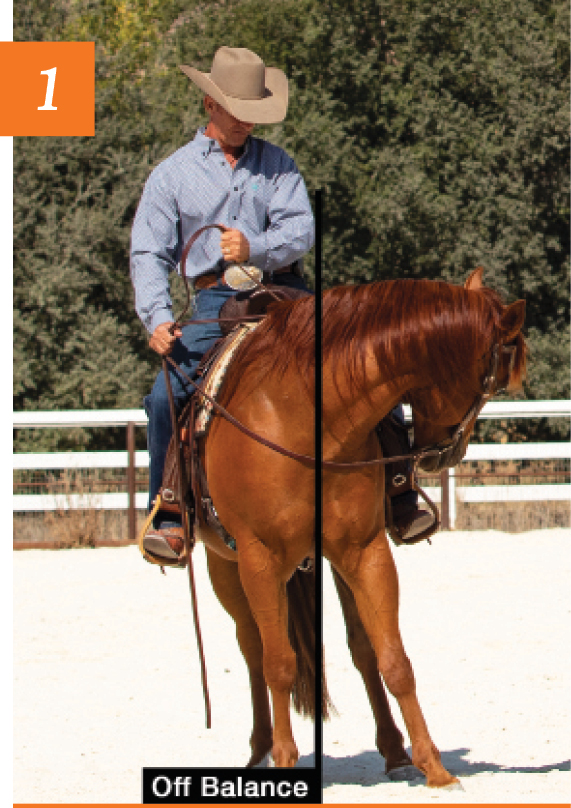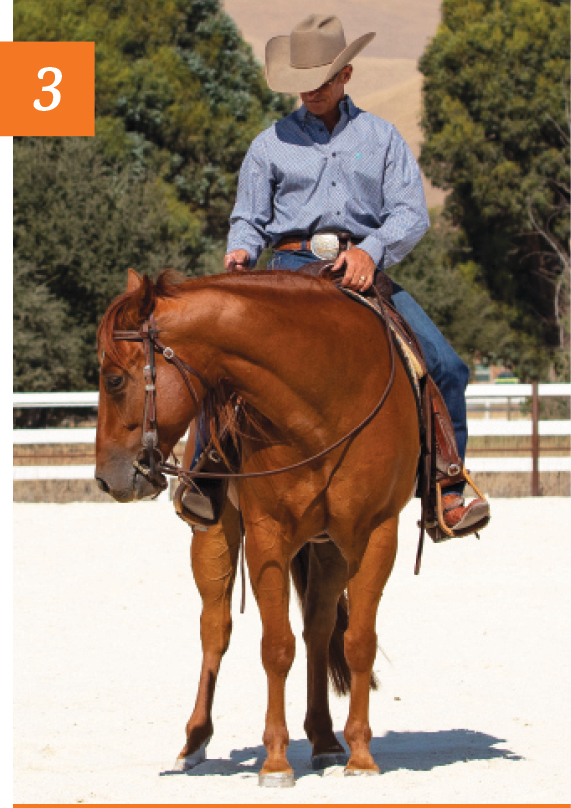In a typical one-rein stop, the rider—often in panic mode—pulls one rein hard across the horse’s neck. This maneuver can get the horse stopped physically, but it leaves all the worried energy that was driving him still bottled up inside. When the rider straightens the horse out, he just wants to go again.
Another reason I don’t favor this method is that it forces the horse to stop in an unbalanced way, leaning and on his forehand. Employed often enough, it can actually teach the horse to shift his body into this bad position whenever you ask for a stop.
In a high-energy emergency, the standard one-rein stop might be a useful last resort, but there is a better way that doesn’t teach your horse to fall on his front end. I call it the bend-to-a-stop. It’s all about letting your horse find the stop as he mentally gears down, rather than physically forcing him to stop.
My way also involves one rein to prevent a runaway or a buck, but it does it in a different way that also teaches your horse positive responses. Specifically, he learns to follow his nose and bend through his ribcage as his inside hind foot finds connection to the rein.
I’ll teach you how to accomplish the bend-to-a-stop.
1. Standard One-Rein Stop
This shows clearly why I’m not a fan of the one-rein stop the way it’s often employed. The direct-rein pull has stopped my horse, but he’s clearly unbalanced and leaning, with his weight on his front end.
In a worst-case scenario, this pull across the neck can actually unbalance the horse enough to cause him to fall, depending on terrain and how fast he’s traveling. My bend-to-a-stop avoids that hazard.

2. A Better Way—Rein Hand Out
I start my bend-to-a-stop by bringing my rein hand out to the side. (Contrast the position of my rein hand as it leads my horse’s head to his right, here, with that of my rein hand in photo 1, snugging my horse’s head to his left.)
This technique leads my horse onto a circle that stops any wayward behavior, yet keeps him moving and responding. My method is still a one-rein stop, but what happens on the way down to that stop is what makes the difference.
[RELATED: Three things to know about a runaway horse.]
I’ll keep my hand out to the side like this until my horse starts to bend through his body on the arc of the circle, following his nose. When that happens, I’ll begin to make the circle smaller. As he continues to bend, he’ll relax, which will indicate his nervous energy has dissipated.
Shop Weaver Leather reins for the ultimate feel!
Products we feature have been selected by our editorial staff. If you make a purchase using the links included, we may earn a commission. For more information click here.

3. A Balanced Stop
And here is the softer, more balanced stop that results. My horse is calm and relaxed, and he’s not leaning or propped on his forehand. With this approach, I’ve gotten him stopped without teaching him body positions I’ll just have to go back and fix later on.
[MORE HELP: For when your horse bucks, bolts, or rears.]
Try a few of Warwick’s favorite brands; Kimes Ranch Jeans and Weaver Leather!

Watch Warwick!
Click here to view Warwick’s bend-to-a-stop maneuver in action.






